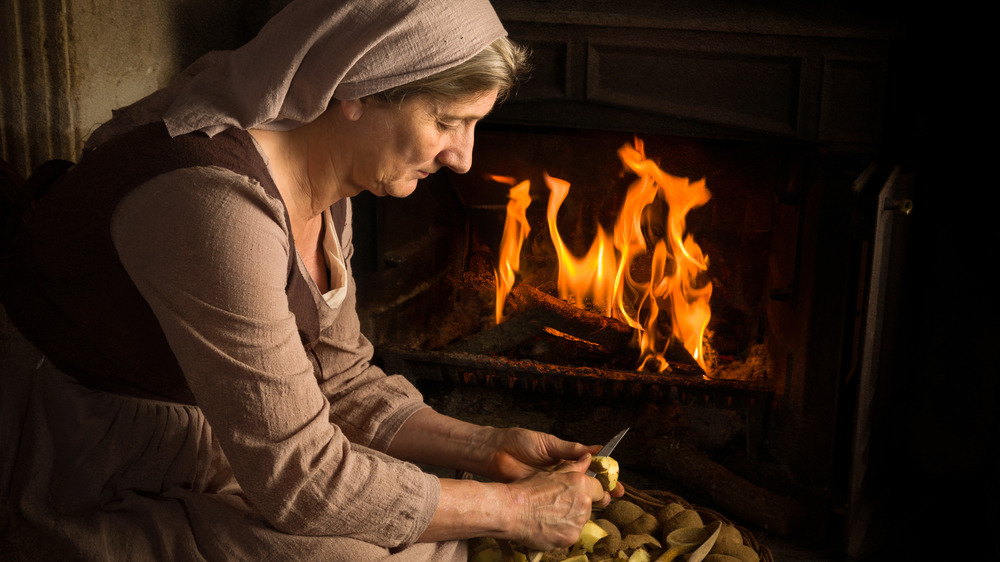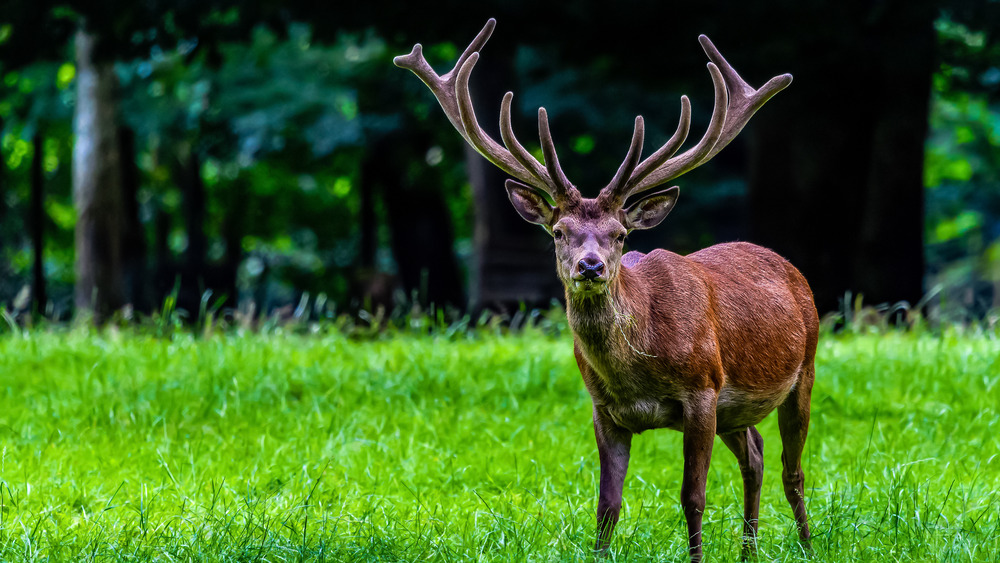The Surprising Thing Medieval Peasants Ate Illegally
It was hard enough to live as a medieval peasant, what with the poverty, the constant, backbreaking work, the fear of contracting the bubonic plague, and so on. To top it all off, peasants didn't have access to an important, abundant food regarded as a privilege reserved for the upper classes. Per the 1992 article "Deer and Deer Farming in Medieval England," published in Agricultural History Review, some estimates put the number of deer parks in existence in Medieval England at a whopping 3,000. The management of deer within these parks was a "significant aspect of medieval agriculture," but it was an activity "confined to the elite."
There were 70 royal forests, and the deer within were only to be used in service of the king, only high-ranking lords could acquire permission to hunt there, and the majority of the larger and longer-lasting parks were owned by the wealthy. Deer meat, or venison, was highly desirable, but rarely offered for sale. The rich people who had access to it on their lands simply kept it for their families' personal use. When it was sold, it was still only accessible to the rich people who could afford to buy it. This lack of availability made venison all the more prestigious and exclusive; if just anyone had been able to have it, it "would have devalued an important aspect of the aristocratic way of life and privilege."
Poaching deer was a popular pastime
Of course, making something illegal doesn't always stop people from doing it. According to Medievalists, in 2008, archaeologists discovered a domed, stone-lined pit dating back to the 15th and 16th centuries. Within the pit, they found over 100 bones from fallow deer, representing about 13 animals. By looking at the size of the bones, scientists were able to determine that they came mostly from young deer and fawns that were killed between May and July. This would fall outside of the regular Medieval deer hunting season of late fall to February. Furthermore, the bones differed from those found in other, similar pits, as they consisted mostly of lower leg bones, skulls, and antlers — few bones that would have provided larger amounts of meat.
Medievalists referenced the article "Making a Fast Buck in the Middle Ages: Evidence for poaching from Medieval Wakefield," in which author Melinda Holmes concluded that the pit was evidence of the work of deer poachers. Apparently, people removed the skins, butchered the bodies to sell the meat, and hid the evidence, consisting of lower leg bones, skulls, and antlers, in the pit.
Holmes went on to note that poaching was prevalent among all social classes; rich people did it for sport, while peasants "supplied a prolific black market in venison and deer skin."

